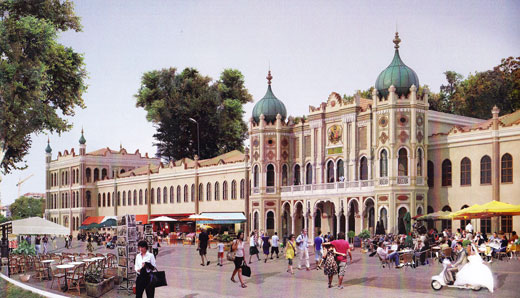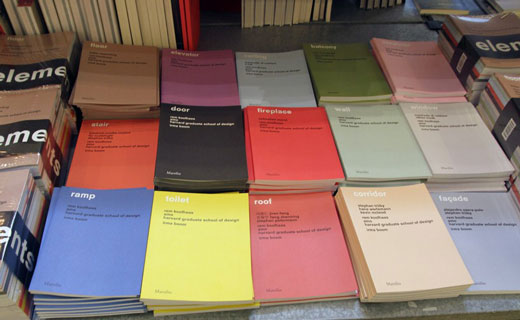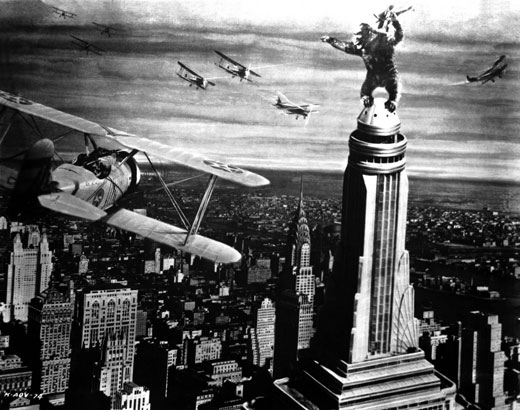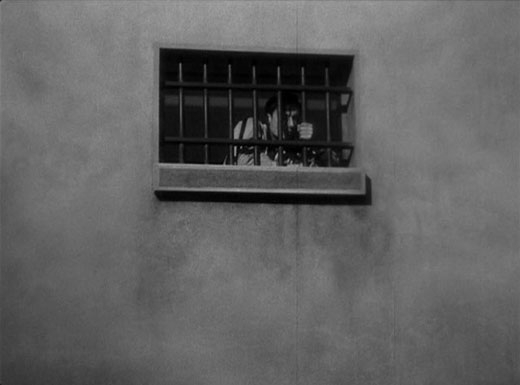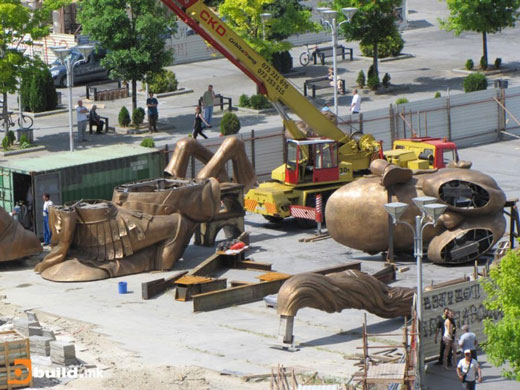
Remembering and forgetting as action
by Tevfik Rada – This editorial was originally translated to English by Ares Shporta.
The rulers of each era tend to manipulate our environment, change it according to their own ideology, erase and re-create memory, in the doing of which they have a variety of methods available. Sometimes it happens to be a sneaky restoration (1) or manifests itself in the form of the populist “re-construction of the distant past” which new conservative neo-liberal rulers nowadays try to apply. As the false history is being written, and memory is threatened by displacement, the neoliberalization of our environment and relationships takes place sneakily and goes unnoticed.
Istanbul is one of the freshest and wildest examples of this: It experienced the demolition of modern places that had witnessed many painful historical eras, and their replacement by mainly pseudo-historical buildings. The only winners of the day were again corporates (2).
We might also refer to an even more familiar example that of Skopje, where the government receives support from its people as a response to the building of ridiculously kitsch statues and monuments, whereas certain groups of interest profit from these grandiose projects. So, what should not escape ones attention is also the neoliberalization of the city and everyday life due to the effect of the public-private partnerships in these demolitions and constructions. But, space as a concept which bears all of our relationships (and therefore a priori political), is not solely made up of these. The reactions, struggles and protests against those are indestructible parts of them, as well. While the rulers try to erase these experiences from the memory, these struggles aim to re-remember (not only of experienced occurrences, but also missed or unrealized experiences). If we are to refer again to the monument of “brotherhood-unity”: it is something that can be done by the bringing forth of an ideal that had once ended up in a fiasco, and an evaluation which takes into account its catastrophes as well as potentials.
To remember is an action!
The relationship between architecture and memory can be defined by a critical historical research of the objects, their modes of usage, looks and the changes they have undergone, relations with the city therefore social classes. ?ts the only way how we can realize that architecture is a discipline which has a conflicting historical formation and therefore is not innocent even at the times when it seems so. Or, put differently, it is not something that can be understood by looking at facades as objects of beauty through the highly qualitative 3D renders of pompous architecture magazines (3). This may only contribute to the collective amnesia, a term which nowadays we hear a lot in the field of architecture.
In my opinion, for pushing one to include these issues in the scope of the one’s thinking, the 14th International Architecture Exhibition in Venice, curated by Rem Koolhaas is a well-prepared biennale. What is most important is that “Fundamentals”, or the main theme of the Biennale, was obtained by a laborious research jointly conducted with many academicians, experts and students, over a period of two years. As a result of this, they have come up with some “fundamental” elements in reading the architecture: the window, the facade, the balcony, the corridor, the fireplace, the toilet, the stair, the escalator, the elevator, the ramp, and so forth.
As an end-point of this research, they have come up with 15 booklets that show the history, structure, progress and the place of these elements in memory, which in the exhibition are accompanied by installations, photographs, etc. I think that these booklets are the most important product of the biennale. It shows us that that the ground we chew with our feet, or that balcony in the 25th floor of a building where we’ve come out to take a fresh breath of air, are not innocent elements. Just as the walls are not simply made up of “walls”, the corridors might appear in front of us as the most perverse elements. Each of them gas come to the day by being re-invented over and over again, charged by forgotten individual or collective experiences. Buildings and cities too are made up of such invisible ghosts, while memory can only be maintained by the re-interpretation or recreation of these ghosts. In a passage of his famous book titled “Invisible Cities”, using a rather poetic language, Italo Calvino depicts these ghosts in this manner:
“… The city does not consist of this, but of relationships between the measurements of its space and the events of its past: the height of a lamppost to the railing opposite and the distance from the ground of a hanged usurpers sawing feet; the line strung from the lamppost to the festoons that decorate the course of the queen’s nuptial procession; the height of that railing and the leap of the adulterer who climbed over it at dawn; the tilt of a guttering and a cat’s progress along it as he slips into the same window; the firing range of a gunboat which has suddenly appeared beyond the cape and the bomb that destroys the guttering”
While the height of the lamppost and the hanging of the usurper in the square, or the height of the fence, or the solidity of the wood that makes up the door silently show us the fiction of space, they also might show us the potentials that went unused in the past (according to Koolhaas, the missed potentials of modernism). Perhaps, by quoting Calvino, I poeticized and mystified it a bit, but what is of importance here is not to reduce history to a single nostalgic memory, for in such a case, I would be disregarding what I’ve said to this point. We should perhaps at this point remember Balzac who said, “Hope is a memory that desires.”
Thus, the change that occurs in our space with all the struggles, pressures and re-inventions, turn it into a multilayered one and it’s reading becomes more difficult, hence the writing of the history of the city becomes harder itself. Rem Koolhaas is aware of this when he is writing his book ‘Delirious New York’. The book talks about a modern space of experimentation, New York, the momentary blazes of its history and how it’s history has been missed out in the name of modernism. By making the analogy of Dali versus Corbusier (!), he delivers the modernist development of New York by contrasting it to the modernism of Europe. According to Koolhaas, this alternative construct can even be seen in New York’s lack of a manifesto – incidentally, the subtitle of the book is named “a retroactive manifesto”. New York, according to him, is an Avant-garde case that has been developed on the other side of the Atlantic completely unaware of itself.
If we come back to the architectural ghosts, it is perhaps safe to say that the way of coming to their realization does not pass through architectural plans and sections or super-qualitative 3D renders. These may eventually serve in hiding what they show, as sometimes the best way of hiding something is putting it into plain sight. Coming into realization of it might happen with certain montages and some fiction. As a result of this, even at times when the element seems to have vanished, its “ghost” might come and slap us on the face. Isn’t it what ironically happens in contemporary architecture: in the designs of new gargantuan buildings, architects focus on concepts such as transparence, fluidity, permeability, melting rooms into a single space, the removal of doors, walls and borders; while on the other hand x-ray machines, 24-hour surveillance cameras and security systems, in their functionality, dominate these concepts. We don’t expect Zaha Hadid or Rem Koolhaas to add the surveillance camera in some corner of the drawing of their section plans, but these elements end up being the prime subject that defines the space.
It is possible to encounter such montages in the Biennial, too. Images of men climbing the stairs, various ways of urinating in front of toilets, or balcony speeches of historical actors (5). The rulers might still be celebrating victories through balcony speeches, but they can as easily be thrown out of those balconies by the people: I think that through these experiences or fiction, we might come closer to understand or give meaning to the architecture that so often turns perverse. For instance through the films of Robert Bresson: I think that the 1983 film “L’argent” is a fictional showcasing of various places of those ruling. Bresson has meticulously selected the doors that divide (or shall we say join? or rather adjoin?) these places: a wooden door is opened and closed; the blue door of the police car is opened and closed; a four-meter door is opened and closed; a metal door is opened; iron bars open and close and get locked. It’s not hard to guess – the imprisonment of someone among of the people. Bresson’s obsession with the usage of such architectural elements can be as well seen at his film “The Man Escaped”. It shows how a political prisoner, who tries to escape from jail, finds the weak spot of a wooden lath door, opens it, reaches to the terrace and earns his freedom. Bresson’s genius is his ability to show us the struggle that takes place within 15 m2 between a man and the wooden door (as we said before, no wooden door is innocent) for tens of minutes (6).
Apparently, Robert Bresson is much more of an architect than many architects. Anyways, let’s get back to the Biennale, and this time to the national pavilions and especially that of Kosovo. If we look at the pavilions made up of the analysis of “national” modern architectures prepared by “the chosen ones” from all around the world, we encounter a mutated picture. Some regard modern architecture as a ruin awaiting its savior, some as a missed experience, while others see it as a regime of oppression that should not be talked of. Even the takes of the ex-Yugoslav countries are so different from each other. I think the main problem at the Biennale, or what we should extract out of it, is the way that pavilions coming from different countries take their ideological position, and their issue of “representation” which reaches the comical. One might perceive UAE’s pavilions representation by the representation of some built or un-built buildings as comical. Other than every country having an issue to problematize, their manner of problematizing this leads to a problem in its own accord. Let’s, for example, take a look at the Kosovo pavilion, which might be of our interest.
The Kosovo pavilion is made up of two parts. In the first part hang photographs taken at different places and times in Kosovo. The photos, which are placed next or up and below each other, are also postcards and can be taken by visitors, to be replaced by other postcards that lie under them. The photographs seem to have been placed at random, for they don’t follow a narrative and do not present themselves as a studied montage: next to a 2011 photograph of an ultra-corrupted building in Pristina, we might see a castle-view photograph of the city of Prizren taken 80 years ago. While experiencing the confusion fueled by this amount of photographs that don’t follow any pattern, we should remind ourselves with an aforementioned saying: Sometimes the best way of hiding something is putting it into plain sight!
The second part includes a construction that is supposed to be a guiding light of our days. It is a mini-tower installation formed by the alignment of traditional three-footed stools of cylindrical shape (that go by the name of “shkami”) After having seen the centennial confusion, the installation gives us a proposition for today and towards the future: the leap of a pre-modern architectural object (!) to the architecture of the information age of today. The formation of a bridge between today and the past. There is nothing wrong with how this last fragment sounds, but here we should pose some very simple questions: ‘which past?’, and then, ‘why the bridge between a past before modernity and today?’. Does a bridge built between today and a static past, by way of such a simple move, intend to make us forget the dynamic and painful modern history? Or are we so afraid of the recent history, that we cannot even face it? Whatever we may say, at the end of the day, a pavilion that has been constructed in the name of authenticity, which could not face modernization and could not rescue its ruined images, montaged a rather static and pastoral object to the day, is far from being authentic and does not serve anything other than feeding the collective amnesia (especially amidst architects and artists). This marriage of the traditional and modern is not at all innocent! The aforementioned intention of re-constructing the ‘traditionalist’ Topçu K??las? in Istanbul was to include shopping malls with the state-of-the-art lighting systems, at the expense of demolishing a modern park. Or, again from a previous example, the “divine antic monuments” of Skopje 2014 that stand on prefab constructions. We may trace such examples from Berlin to the Moscow of today. What at first sight appears as innocent becomes actually dangerous because of the things it hides. As it reminds us of one thing, it represses or makes us forget the other, while what it reminds us of does not go beyond being a nostalgic, yet dead memory. It is of importance to distinguish the difference between the reminding we talked of before and this nostalgic memory!
The main aim and according to me, the most important part of the Biennale, was an analysis and research of modernity and the reactions towards it, but rather than analysis and research, what we faced was an aestheticization of the past and today. At the end of the day, a certain amount of time and a budget is handed to the participants of the Biennale, and these may serve for a serious research. But in the catalog, we read the following words: “?n the beginning of the XX. Century, self-regulated democratic urban order has been replaced with government urban control, foreign to urban custom and culture…….. Modernity has been a synonym of destruction and foreign aesthetics.” (7)
This is what I meant by the manner of the problematization of the issues by states becoming a problem in itself. As a matter of fact, when we look at some of the postcards, we might get a glimpse of the “visible” problems in the cities (not because postcards are explanatory, but rather because the problems themselves are pornographically explicit): lives and cities that change due to the partnership of the market and the state: the privatization of spaces that belong to the people and their replacement by for-profit entities, and in the doing of this, the application of the most primitive and spontaneous market methods with the aim of maximizing profit. Other than this, a doctrine that re-creates the city is out of question. At a place that is wholly made up of a primitive market, doctrinal concepts such as the Postmodern (8) lose even their validity. Its strange cultural and aesthetical results can be examined, too: the alienation of the citizen to the city due to the reduction of public spaces, or architectural elements comically losing their meaning of purpose: balconies one can’t step into, windows that can’t be opened because of new illegal buildings, blinds or sun blockers that don’t contact the sun, etc.
These are more like problems caused by the ultra-corrupt public-private relationships in Kosovo. But, the city and architecture are struggling with these public-private partnerships in places other than Kosovo, too. While many buildings as experiments are being built, these experiments are being cancelled out by the own institutions of the private sector. We can roam around extremely sterile environments, at certain times of the day. (9) Isn’t the Venice Biennale something of the sort, as well? The Biennale is a spatial event, and as such it is spread around the city. When we add the architects, artists and guests that come from all over the world, and then the global corporates as sponsors of the biennale making up their own space, we face a confusing circus. I thought I will see some statistical data in the biennale catalog: How much was spent, how many guests were invited, how many of them live in their countries, how many live in other countries and represent yet another country, how much did each country spend and what was the amount that took Rolex to be more visible than the pavilions? But apparently Koolhaas, who is fond of statistics and diagrams, has hurriedly skipped this issues.
CITE:
[1] In which case it can be dealt with and treated as a problem within itself. The restoration of what?! For instance, what meaning could the restoration of the monument of “brotherhood-unity” in Prishtina possibly take? It by no means is the restoration of the already problematic ideal of the “brotherhood-unity”, but rather, in the best of cases, it can merely be the polishing and isolation of its surface. If we come to see the embodiment and monumentalization of an ideal by a ruling power as its first death, we might evaluate its restoration as a second death: the death of something that has already ceased to be! Thus, the debate on modernism and restoration may lead to an oxymoron such as the above-mentioned one
[2] This was precisely what was to happen to Gezi Park, another modern space, which in 2013 was threatened by the governments decision to be replaced by an eclectic building called Topçu K??las?, which was once placed in that location prior to the construction of the park, and that would be re-constructed in a manner that it’d also accommodate a shopping mall, but the project was suspended as a result of a daring protest of the people.
[3] Representation of Architecture through magazines and other publications is a very interesting topic. Architects (and all other designers) know (at least from Le Corbusier) that the representations of their buildings are more important in forming the history of architecture than their building itself. For a brilliant research on modern architecture’s representation through modern mass media see : Beatriz Colomina , Privacy and Publicity: Modern Architecture as Mass Media, The MIT press, 1996.
[4] Rem Koolhaas in Wired 11.06
[5] Here I was reminded of a montage applied to the photograph where after the victory of his party in the 2014 local elections and surrounded by his family, the primer minister of Turkey made a balcony speech. The montage showed him falling from the balcony, as if it had spat him.
[6] Think of Shawshank Redemption, which looks meaningless next to this film: the director fills up the time required for the man to dig up a tunnel in the wall by meaningless stories
[7] The catalog goes like a manifesto with some naïve dialectical statements:“….erasure of rich regional urban cultures in the name of modernity”; “democratic urban order has been replaced by government urban control”; “Under programs unknown to the indigenous people, the socialist government destroyed….”
[8] ?n the article about the Kosovo Pavilion at the Archdaily there is a quote that goes like “This process lasted until the postmodern movement in the 1980s, which attempted to restore architecture’s relationship with tradition”
[9] The phenomenon of Disneyland, a puritan space (no sex, no drugs, no alcohols) which you can “enjoy” only during the working hours.

